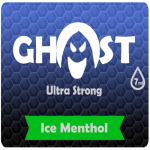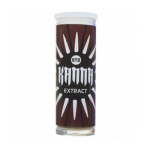Kanna Guide: What You Need to Know

Known by its name sceletium tortuosum, Kanna is an herb that grows and thrives in South Africa. Its name means chewable or something to chew. This herb has been used since the prehistoric times in South Africa by pastoralists and hunters.
The locals, who ingested it by chewing or drying, used it for its psychoactive effects. Other ways of consumption include smoking and snorting, common among tribesmen.
Kanna is has high concentrations of alkaloids especially when harvested in early summer or spring. It is because the concentration of the compounds are said to be fluctuating seasonally in some seasons.
If today the herb is drank as herbal tea or made into tinctures or gel capsules, the natives usually dry or ferment the herb before chewing and then swallowing the saliva. Today, let’s get to know more about Kanna in the following legal high reviews.
How to use Kanna
Today, the herb can be bought in many forms, such as a tincture or a powder, as a tea or an ingredient in herbal mixes. Isolations and extract of some alkaloids from the herb can also be bought. But for those who want to cultivate Kanna, they can also buy Kanna seeds.
Sublingual
It involves placing it under one’s tongue and keeping it there for a time, until the alkaloid content are fully absorbed by the body.
Regarding the effects, they can last for about two hours, and then decline in the following hours. A subtle effect can be achieved from a dose from 50 and 150 mg, but between 200 and 400 mg for a middle level effect. The dosage can be up to one gram.
Tea
Honey is usually added instead of sugar. For the best results when using this method of consumption, one must take it before meals or on an empty stomach.
To start with, a good dose is between 200 and 500 mg if one is making tea. Some also experiment with a dose up to two grams. Higher dosage can lead to dizziness, distortions and vomiting.
Smoking
The recommended dose can be between 50 mg and 500 mg. For a middle level dose, the recommended dose is between 100 and 250 mg. Its peak effects can come within an hour, but start to decline in the next hours.
Smoking can deliver a trippy or stoned effect with less pronounced analgesic and euphoric effects.
Insufflation
The usual dose recommended is between 50 and 15 mg, but 20 mg can be enough for a good effect. People can take small doses throughout the day.
Chewing
This is another method to consume Kanna, especially among the locals that chew powdered or fermented Kanna for hours. When done, they also spit the herb out so that they can use it again later.
What are the effects of Kanna?
This herb has at least nine alkaloids that deliver different effects, including elevated moods and reduced stress, tension and anxiety, when sniffed, chewed or smoked.
The locals who needed to travel for many hours used the herb for its analgesic and appetite suppressing properties. They used to chew it or just keep it under their mouth for a long time.
When intoxicated, they could feel euphoria for the initial stimulation before feeling its sedative effects later.
However, when sniffed or taken in large doses, the effects can lead to stimulation, inebriation and sedation. Some source also revealed that using it could enhance the effects of psychoactive substances.
Many sources have also noted that it can cause laughter and gaiety. It has also been used by the Hottentots, who claimed it’s useful in awakening their animal spirits.
However, they could lose consciousness or even become delirious if they chewed too much of it.
What are the side effects?
There were no reports of major side effects. However, some people might feel drowsy or mild nausea. Other side effects, which vary from one person to another, include insomnia, sedation or mild headache.
Kanna is a safe herb and can be used in many ways including chewing and drinking as tea. Which among these methods have you tried? Share it with the community today!















